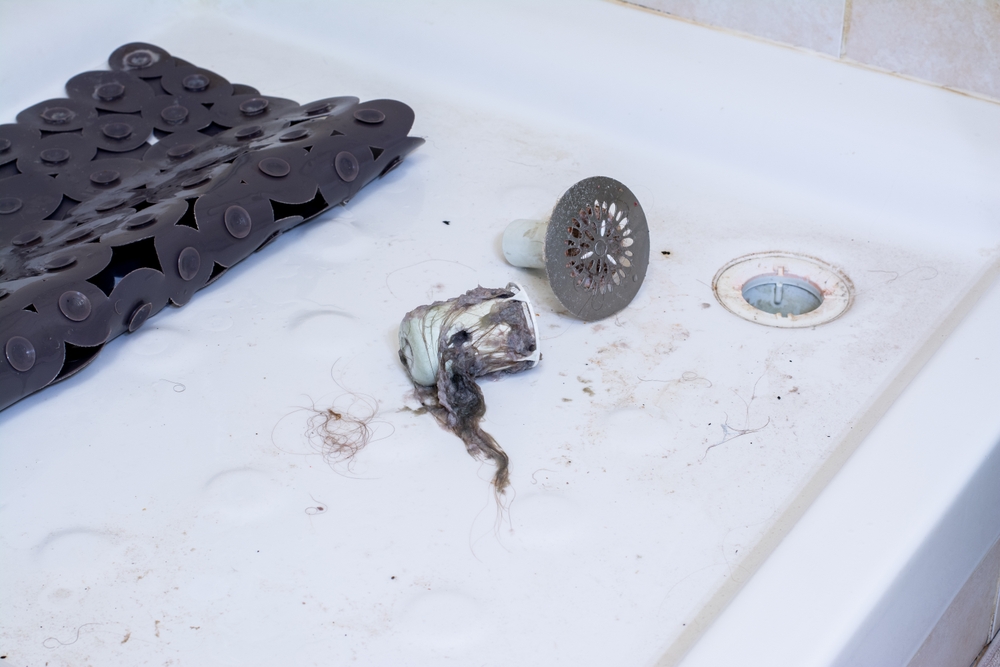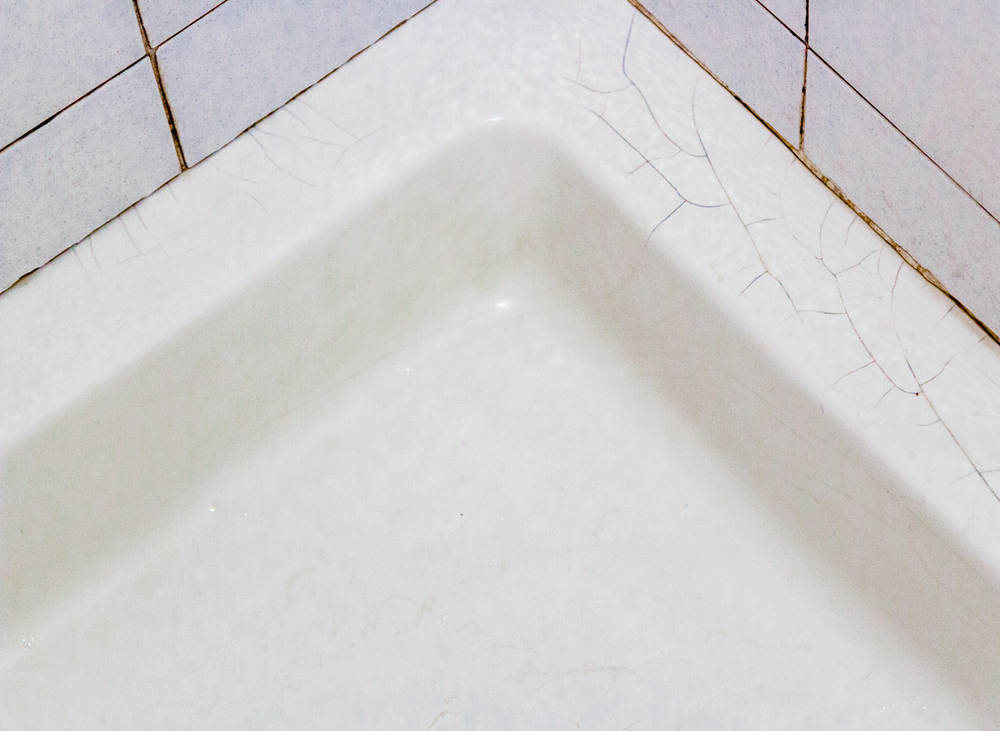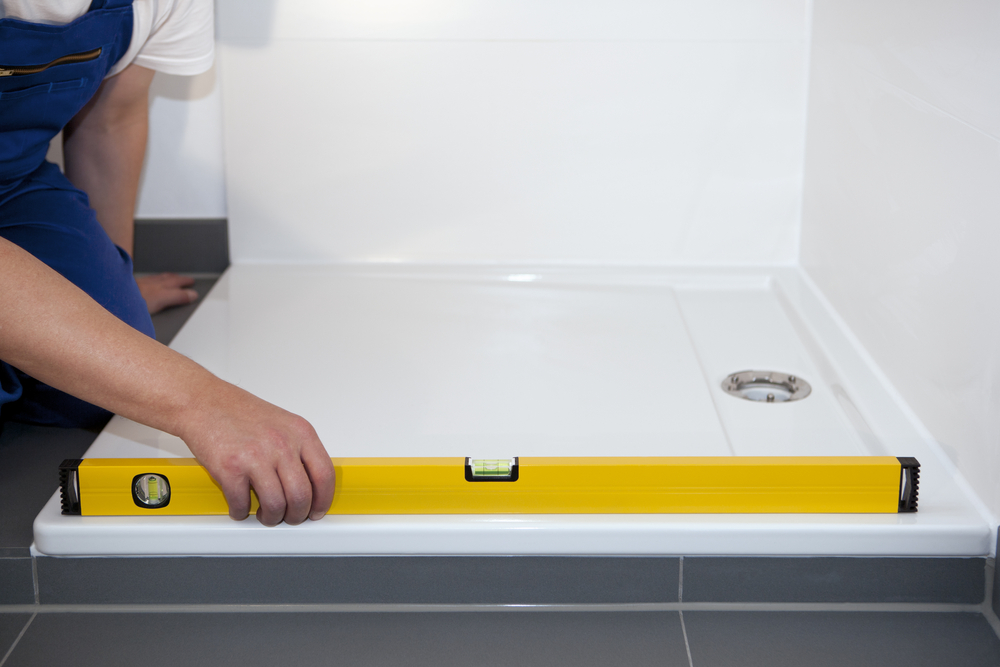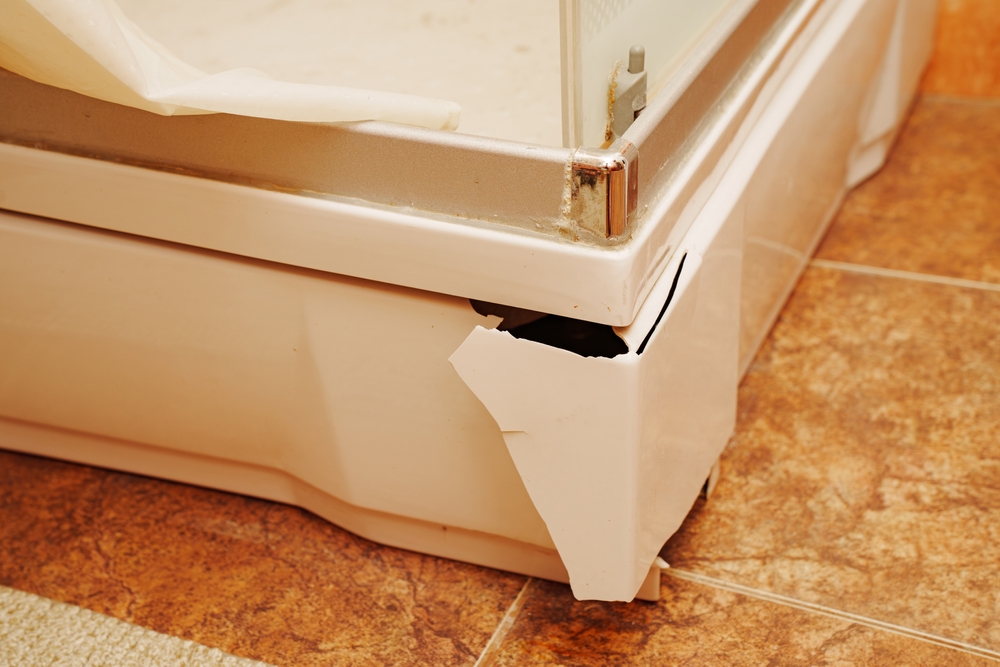
Shower trays are an essential part of any walk-in shower enclosure. Installed on the floor, they collect water and waste from the shower and direct it to the drain in a safe and effective way.
Occasionally, walk-in shower tray problems such as leaks and cracks occur, causing significant damage to your bathroom floor, tiles, and elsewhere. From poor-quality materials to inadequate installation, let’s explore the common issues with shower trays and how to overcome them.
What is a Shower Tray?
A shower tray is a key component in any shower system. Installed on the floor, it directs wastewater into the shower drain to leave the tray free from pooling.
Shower trays come in a variety of shapes, sizes and designs including square, rectangular, and quadrant. When choosing a shower tray, you should consider the following:
- Size: The shower tray must be big enough to cope with all the water that comes with taking a shower.
- Dimensions: The shower tray should fit snugly into the shower enclosure. As a rule, rectangular shower trays are better for larger bathrooms while square trays are more suitable for small bathroom spaces.
- Materials: Choose from a range of materials including acrylic or acrylic-coated stone resin which are watertight and feature anti-slip qualities for added safety.
Now to highlight common walk-in shower tray problems, what causes them, and how to avoid them so your bathroom remains pristine.
What are Common Walk-in Shower Tray Problems?
Walk-in showers are similar to wetrooms but with a few key differences. For instance, the shower space is often more contained thanks to one or more shower screens, and they also feature the all-important shower tray.
Walk-in showers are no longer reserved for luxury suites and plush hotels either. Many homes boast a walk-in shower and their popularity keeps growing thanks to their practicality, low maintenance, and design flexibility.
But walk-in showers are of no use if the shower tray is leaky, damaged or faulty. From cracked seals to poor drainage, here’s a selection of the most common walk-in shower tray problems.

1. Leaking Shower Tray
Leaks are among the most common walk-in shower tray problems. Failure to fix a leaking shower tray can cause much wider damage to your bathroom and floor and more expensive problems further down the line.
Problem: Over time, seals around the edges of the shower tray become worn and cracked allowing water to seep out onto the floor underneath. This can be caused by cracks in the tray, poor seals, or damaged sealant.
Solution: Inspect the tray for visible cracks, especially around the edges or corners. Identify gaps between the tray and the wall, or a faulty seal around the shower drain. Carefully remove the old sealant and reapply a waterproof silicone sealant around the edges of the tray. Leave it to cure and set before reusing the shower.
Small cracks in the shower tray itself can be repaired with waterproof resin or filler, each designed for use with a specific shower tray material. However, when damage is more widespread, consider replacing the shower tray with a new one for added security.
2. Poor drainage
Another common cause of walk-in shower problems is poor drainage. Unless rectified, this can have a negative impact on your shower experience and damage your shower.
Problem: Shower drains become blocked with hair, soap scum, or debris which stops wastewater flowing away and leads to water pooling or overflow. An incorrect slope on your shower tray, or a faulty shower trap, can also lead to drainage problems.
Solution: Clean and maintain your shower or wetroom drain regularly and remove any blockages that prevent water from flowing away. Also, if the shower tray isn’t sloped towards the drain at the correct angle, water will pool in the base. You can solve by adjusting the position of the tray and or reinstalling it with proper levelling to allow water to flow.
Similarly, broken drain traps can also lead to poor drainage. If your drain trap is broken or poorly installed, consider replacing it with a new version to improve the overall performance.

3. Inadequate Installation
If you’re considering an upgrade, there are many benefits to hiring a professional bathroom or wetroom installation service that offers full guarantees and peace of mind. Unless you know what you’re doing, inadequate installation can cause the shower tray to move when stepped on and lead to leaks or cracks.
Problem: The shower tray flexes and moves when weight is applied, or the tray isn’t level, causing water pooling in low areas and cracks to appear. This is likely to have been caused by bad installation or an insufficient support structure underneath the tray.
Solution: Strengthen the tray by adding or reinforcing a support base under the tray, using a proper waterproof adhesive where necessary. If that doesn’t work, you may need to remove the tray to add a stronger support that won’t move when you step into the shower.
Similarly, poor installation can give rise to gaps between the shower tray and wall which allows water to leak out. Filling in these gaps with a waterproof sealant will prevent this from happening and prolong the life of your shower tray.
4. Mould or Mildew Growth
Mould and mildew thrive in damp environments such as bathrooms and wetrooms. Not only can this ruin the look of your bathroom, but it can also cause an allergic reaction in some people.
Problem: Moisture and condensation can accumulate around the edges or underneath the shower tray. This will often result in unsightly black spots appearing on your shower, spoiling both its appearance and functionality.
Solution: There are many simple ways to prevent mould growth in a bathroom or wetroom. These include:
- Regularly clean and dry the shower tray and surrounding area after taking a shower.
- Improve ventilation by opening a window or using an extractor fan to remove moisture from the air.
- Spray any affected areas with an approved anti-mould solution to get rid of unsightly marks.
5. Stains and Discolouration
Walk-in shower trays can quickly lose their glistening appeal when they are properly cleaned and maintained. Nobody wants to feel like they’re standing on a dirty tray every time they step in the shower.
Problem: Everything from hard water to soap suds, and from debris to grime can cause ugly stains and discolouration on your shower tray.
Solution: Wipe stains off as soon as they appear with a soft cloth or sponge. Always use a non-abrasive cleaning product to avoid damaging the shower tray itself. For more stubborn stains, consider using a stronger vinegar-based solution or a cleaner specifically designed for the shower tray material.

6. Lack of Waterproofing
Inadequate waterproofing around the shower tray and base is a common problem in many bathrooms and wetrooms. If these areas can’t withstand the onset of water, your entire bathroom or wetroom could be in danger of flooding.
Problem: A lack of waterproofing around the shower allows water to seep underneath and potentially into the floorboards where it can cause structural damage leading to costly repairs.
Solution: Liquid waterproofing membranes are an ideal solution for protecting the area around your shower tray from water damage. They create a robust and flexible waterproof barrier over a surface which prevents water from penetrating into the walls or underlying materials.
Waterproofing membranes are typically made from resins, polymers and other additives before being typically applied by spraying, rolling, or brushing. Effective waterproofing ensures the shower structures do not weaken over time and extends the longevity of your bathroom and wetroom.
Have You Experienced Walk-in Shower Tray Problems? We’re Here to Help
At CCL Wetrooms, we have years of experience in bathroom and wetroom installations. Contact us today and speak with one of our technical experts to find an affordable solution to your walk-in shower tray problems and more.









